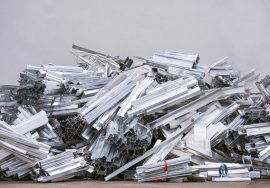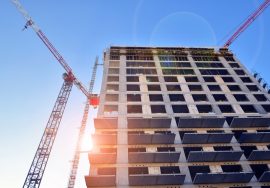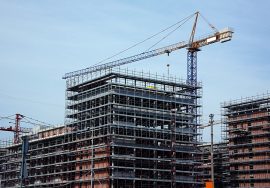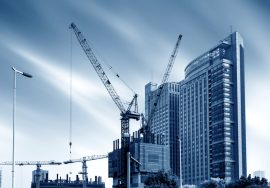
LEED Certification: Driving Sustainable Construction in India
LEED Certification: Driving Sustainable Construction in India
In today’s construction industry, sustainability is no longer optional—it’s essential. As India continues its journey toward eco-friendly infrastructure, LEED certification (Leadership in Energy and Environmental Design) has become one of the most recognized standards for sustainable construction worldwide.
The adoption of LEED certification in India is transforming how buildings are designed, constructed, and operated. From reducing energy use to improving indoor air quality, this certification helps create healthier spaces while protecting the environment.
What Is LEED Certification?
LEED certification is a globally recognized green building rating system developed by the U.S. Green Building Council (USGBC). It provides a framework for healthy, efficient, and cost-saving green buildings.
Buildings that earn LEED demonstrate superior performance in energy efficiency, water conservation, waste reduction, and use of sustainable materials. It applies to all types of buildings—residential, commercial, institutional, and industrial.
The certification evaluates a project based on several sustainability categories, including:
-
Sustainable site development
-
Water efficiency
-
Energy and atmosphere
-
Materials and resources
-
Indoor environmental quality
Levels of LEED Certification
LEED projects are awarded points based on sustainability performance. The total score determines the level of LEED certification a building receives:
-
Certified (40–49 points) – Entry-level sustainability compliance
-
Silver (50–59 points) – Strong commitment to environmental design
-
Gold (60–79 points) – High performance in multiple green building areas
-
Platinum (80+ points) – The highest standard of sustainable excellence
Each level reflects the project’s dedication to sustainable development and environmental responsibility.
Benefits of LEED Certification
1. Energy Efficiency and Cost Savings
One of the main advantages of LEED is its focus on energy efficiency. LEED-certified buildings use advanced lighting, HVAC systems, and renewable energy sources to minimize energy consumption and lower operational costs.
2. Healthier Living and Working Environments
LEED-certified structures emphasize indoor air quality, natural lighting, and non-toxic building materials. This ensures healthier spaces for occupants—reducing health risks and improving overall well-being.
3. Increased Property Value
Buildings with LEED certification often command higher market value. Developers and investors view them as premium, future-ready assets that attract tenants and buyers who prioritize sustainability.
4. Reduced Environmental Impact
By using green materials and sustainable construction practices, LEED projects reduce carbon emissions, waste, and water usage—helping to protect the planet for future generations.

LEED Certification in India
India has witnessed remarkable growth in LEED-certified buildings, reflecting its strong commitment to sustainability. The U.S. Green Building Council (USGBC) and the Indian Green Building Council (IGBC) have worked closely to promote LEED across the country.
Major Indian cities like Delhi, Mumbai, Bengaluru, and Hyderabad now host hundreds of LEED-certified offices, malls, hospitals, and residential complexes. These projects are setting benchmarks for sustainable architecture and energy efficiency.
India ranks among the top three countries globally for the number of LEED-certified projects, showcasing its leadership in green building innovation.
For more details on LEED and India’s progress, visit the official Indian Green Building Council (IGBC) website.
Steps to Obtain LEED Certification
-
Project Registration – Register your project with the USGBC online portal.
-
Application Submission – Provide detailed documentation on materials, energy systems, and design strategies.
-
Review Process – The project undergoes technical evaluation by LEED professionals.
-
Certification Awarded – Based on earned points, the project receives a LEED level.
For expert guidance on integrating sustainable design and achieving LEED , connect with AMS India. Their professionals specialize in eco-friendly construction, green materials, and sustainable building solutions.
Why LEED Certification Matters for the Future
In a rapidly urbanizing nation like India, LEED ensures that growth remains environmentally responsible. It encourages innovation in architecture, promotes energy conservation, and aligns with India’s commitment to achieving Net Zero emissions by 2070.
Beyond compliance, LEED represents a shift in mindset—prioritizing long-term sustainability over short-term gain. Buildings certified under LEED are not just structures; they’re symbols of progress, responsibility, and environmental stewardship.
Conclusion
LEED certification is shaping the future of India’s construction industry by setting new standards for sustainability and performance. From improving energy efficiency to enhancing health and comfort, LEED-certified buildings contribute to a cleaner, greener planet.
By adopting LEED certification, India’s architects, builders, and developers are building more than just infrastructure—they’re building a sustainable legacy for generations to come.
Read more related articles to enhance your knowledge and make informed decisions
Cost-Effective Modular Construction: Fast, and Sustainable Building Solutions
Smart Modular Buildings: Innovative, Efficient, and Sustainable Construction








